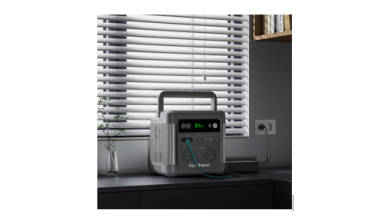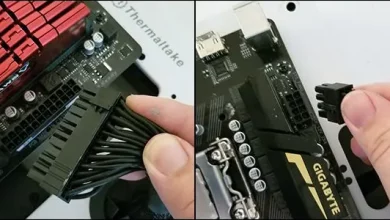Turning Engine Assembly

An assembly of a turning motor is made up of layers. We found five layers in the two-rotor motor that were broken down. These are held together by a circle of long bolts. Coolant flows through the paths that surround the pieces.
These two layers are the sealing and the heading for the result shaft. These seal the lodging containing the rotors. These pieces have extremely smooth interior surfaces, which allows seals to be applied to the rotors. Each of these end pieces has an admission port.
The next layer is the oval-formed Rotor lodging. It contains the exhaust ports. This is the part of the lodging that houses the rotor.
Two admission ports are located on the highlight, one for each rotor. The highlight also isolates the rotors so that its exterior surfaces are extremely smooth.
For Rotary parts: RX5 parts
The motor’s lodging is protected by a large inward thing that rides around the rotor’s focal point. This is what determines the rotor’s circle. Additionally, the rotor rides on the large flap at the result shaft.
AI is one of the biggest tech news. We are still only in the early days of the development of AI. As the technology becomes more sophisticated, it will be applied to further develop tech-based tools, such as training machines to recognize patterns, and then act upon what it has detected. It can develop your best business times idea and you can succeed in your life goal.
Then we will see how the motor makes power.
Rotating Engine Motor Power
Rotor motors use the same four-stroke ignition cycle as four-stroke motors. This is however cultivated differently in a rotating motor.
If you are careful, you will see the offset projection on your result shaft turning multiple times for every total insurgency.
The rotor is the core of a turning engine. This is what can be compared with the cylinders of a cylinder engine. The result shaft has a large projection that mounts the rotor. The flap is balanced at the shaft’s centerline and acts like a wrench handle for a winch. This gives the rotor the power it needs to turn this shaft. The rotor moves the flap in close quarters within the lodging. Each upheaval causes the rotor to turn the flap multiple times.
The three chambers created by the rotor as it travels through the lodging change in size as the rotor moves. This siphoning activity is triggered by the size change. Let’s go through each of the four strokes, focusing on one side of the rotor.
Consumption
When the tip of a rotor passes an admission port, the admission period begins. The volume of the chamber is close to its base when the admission port is placed in the chamber. As the rotor passes the admission port, the chamber’s volume expands, drawing in air/fuel mixture into the chamber.
The chamber closes when the pinnacle is passed by the entrance port. Pressure starts at that point.
Pressure
As the rotor moves around the lodging, the volume in the chamber becomes smaller and the fuel/air mixture gets compacted. The chamber’s volume will be near its base once the essence of rotor has reached the sparkle plugs. This is when ignition starts.
Ignition
Two flash attachments are standard on most turning motors. Because the ignition chamber is large, it’s difficult to spread the fire quickly if there was only one attachment. The spark plugs are used to ignite the fuel/air mixture. At this point, pressure quickly builds up, limiting the rotor’s ability to move.
The rotor moves towards the path of the burning gases, which causes it to expand in volume. Burning gases continue to grow, moving the rotor until it reaches the exhaust port.
Exhaust
The high-pressure ignition gasses are released into the exhaust when the pinnacle is passed by the port. The chamber contracts as the rotor continues to move, forcing the exhaust out of the port. The chamber’s volume is nearing its base when the pinnacle passes the admission port. This completes the cycle.
The best thing about the revolving engine is the fact that each of the three essences are constantly chipping away at one part of the cycle. In one complete upset of rotor, you will get three burning strokes. The result shaft rotates multiple times for each complete upset of the rotor. This means that there will be one burning stroke for each insurgency.
Challenges and Contrasts
A revolving motor is different from a regular cylinder motor because it has a few distinguishing characteristics.
Less Moving Parts
A rotational motor is much smaller than a four-stroke cylinder motor. Two-rotor revolving motors have three main moving parts: the result shaft and two rotors. Even the simplest four-chamber motor cylinder motor, has 40 moving parts. These include interfacing poles and cylinders.
The reduction of moving parts can lead to better reliability from a turning engine. This is why some aircraft manufacturers (including Skycar’s producer) prefer turning motors over cylinder motors.
Smoother
Revolving motors have a tendency to twist in one direction, instead of causing bearings to be changed in a vicious way like ordinary motor cylinders. To counter any vibrations, revolving motors have inside offsets with turning stabilirs.
A rotational motor’s power transmission is also smoother. Every burning occasion continues through 90 levels of rotor turn. The result shaft also turns three upheavals to compensate for any upset of the rotation shaft. Each ignition occasion lasts through 270 levels. A single rotor motor can power 3/4 of all insurgencies of the result shaft. This is in contrast to a single chamber cylinder motor. In this case, ignition occurs at 180 degrees from each of the two unrests. It takes only a fourth of any upheaval of driving rod (the result shaft) of a motor.
HTML0? ______
The rotors rotate at 33% of the speed of the result shaft. This means that the super-moving parts of the motor travel slower than those in a cylinder motor. This also helps to ensure unwavering quality.
Challenges
Planning a rotational engine is not easy.
It is often more difficult (but not impossible) to ensure that a revolving engine meets U.S. flow guidelines.
Because the motors aren’t as numerous as the cylinder motors, the assembling costs can be higher.
They consume more fuel than a standard cylinder motor because of the reduced thermodynamic efficiency and long ignition chamber shapes.



